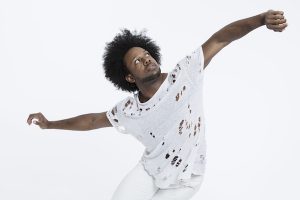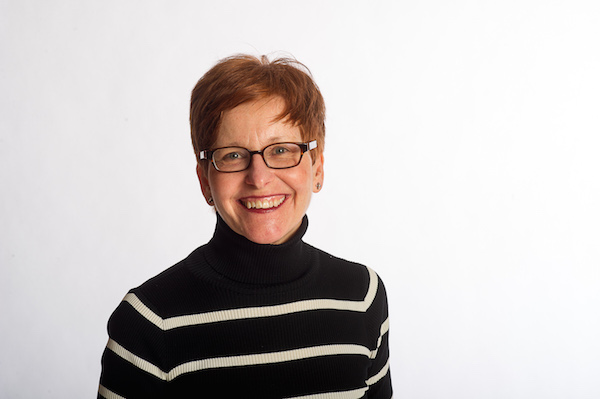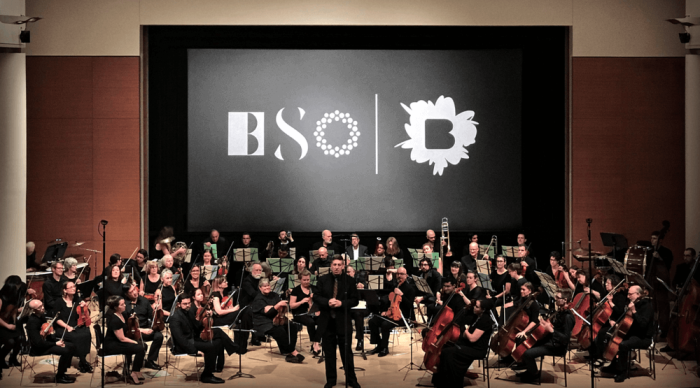
BY BRIAN McCORMICK | For years, people in the dance field talked about, experimented with, and funded research on “new models” — as alternative organizational structures and approaches to creative work, presentation, fundraising, audience development and press/marketing practices. While some of these were enabled or empowered by the rise of social media, surprisingly little institutional progress has been made. Due to calcification of leadership and a lack of innovation, the field remains largely unchanged, leaving artists at the mercy of an out-moded system.
There is, however, a beacon of hope across from City Hall in Lower Manhattan, where Gina Gibney is building (on) an empire rebels can be proud of. Some may see this as a recent development that capitalized on the 2013 bankruptcy of Dance New Amsterdam (DNA), but the reality is Gibney has spent her entire adult life working on this — well, at least the last 25 years.
Gibney Dance Company was founded as a performing and social action dance company in 1991 aimed toward women in need. They used a community action model; while other companies had a dramaturge on the payroll, Gibney had a clinical advisor.
890 Broadway, in the Flatiron District, became the company’s artistic home. With the security of space, Gibney focused on “keeping the company, and being a community actor, while making it viable, and trying not to lose money,” she told our sister publication, Gay City News.
“For 20 years we had been working on the same scale, with the same problems, and no momentum,” she said. “The tipping point came when we had enough money earned from the studio space that funders began to pay attention, and expressed a desire to invest in what they saw as a stable entity.”

In 2010, the company expanded its footprint at 890 Broadway into an eight-studio community center, and introduced a slew of new programming, events, and partnerships with Dance/NYC among others. Like Mark Morris Dance Center and the Ailey Center, Gibney blossomed into a secure community settlement for dance artists.
Shifting into high gear, Gibney used earned income from its studio rentals to pilot-test a residency for mid-career artists. The Mellon Foundation has now funded that residency program, which will serve 30 artists over three years.
“Instead of paying to turn on the lights,” Gibney explained, “they were paying for added programming. Funders love that.”
The same year Gibney was expanding at 890, DNA was close to eviction from its space at 280 Broadway. The company finally went belly-up in 2013 after failing to implement a long-term funding strategy as part of its effort to “come up with a stronger model,” as DNA’s director said at the time.
Gibney Dance stepped in, signing a lease on 36,000 square feet at 280 and hosting a wall-breaking party to mark its gut renovation into the Agnes Varis Performing Arts Center, which houses performing arts space, studios, and resources for the arts and social justice communities. Now, like Ailey, the company is also embarking on an expansion, adding 10,000 square feet to the downtown complex, which will house seven smart studios equipped with technologies to create and disseminate high-quality digital content.
The company will also deepen the social justice work that has been at the core of its activities since the beginning through its now-global Community Action programming that uses dance and creativity to empower domestic abuse survivors and their families to take back control of their lives. The center will also provide social justice and community action services and training, and also cultivate partnerships, like the one with the Mayor’s Office to Combat Domestic Violence, with whom Gibney Dance conducted a symposium on bullying and abusive relationships.
Perhaps most incredible among Gibney’s accomplishments is the fact that her company members are now 52-week salaried employees with health care and the month of August off. She accomplished this by redesigning their jobs to include activism and advocacy.
“What does a company residency look like?” Gibney asks. Since last year, each company member has been assigned an advocacy fellowship.
“They envision and implement something they deeply care about using the resources of the organization,” she explained. “We activate dancers as leaders of the community, provide their projects with incubation and mentorship by senior staff. They each choose the area they want to focus on.”
And they are making a real difference. Dancer Nigel Campbell developed and now co-directs Move(NYC), a rigorous, tuition-free summer dance intensive for talented locals teenagers who lack the financial means to attend summer dance programs like those at Jacob’s Pillow or the American Dance Festival.
This community-based philosophy can also be found at work in some of the curatorial programming, like “Double Plus,” shared evenings of work by artists chosen by other artists.
“Artists are coming to us with ideas,” Gibney explained. “We want to have a strong artist-driven selection process, as well as selective presenting curated around a strong point of view. And we are working on how to make that process fair.”
As for her own dance-making, the choreographer joked she hasn’t been “cranking them out in the last five years,” but she’ll present her new evening-length work “Folding In” during the first two weeks of November.
“We can’t do one thing all the time in this field. There has to be an acknowledgement of cycles and processes and demographics,” the dance magnate elaborated. “We wear many hats and embrace and use those things. But I put it all behind me when I walk into the studio and breathe the same air as the dancers. Admittedly, making this new work has been slow, stretched out over time, but it feeds me in a way nothing else does.”
“Folding In.” Nov. 2–5 at 8pm; Nov. 10–11 at 8pm; Nov. 12 at 2 & 5pm. At 280 Broadway (enter at 53A Chambers St.). For tickets ($15-20) and info on programs, services, classes, and events at both Gibney Dance Center spaces, visit gibneydance.org or call 646-837-6809.


















